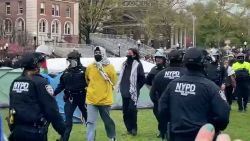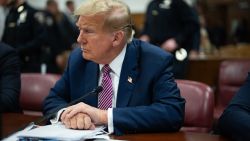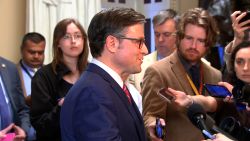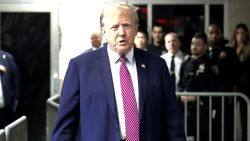The White House said Thursday that a small contingent of US troops will remain in Syria following President Donald Trump’s order for a “full” withdrawal of the American military from the country.
“A small peace keeping group of about 200 will remain in Syria for (a) period of time,” White House press secretary Sanders said in a statement.
In December, Trump ordered staff to execute the “full” and “rapid” withdrawal of US military from Syria, declaring that the US had defeated ISIS.
“We have defeated ISIS in Syria, my only reason for being there during the Trump Presidency,” Trump tweeted at the time, drawing criticism from some lawmakers and surprising foreign allies.
One of the lawmakers who criticized Trump for his decision was GOP Sen. Lindsey Graham, of South Carolina. However, Graham praised Trump Thursday for the decision to leave some troops behind as a peacekeeping force.
“This decision by President Trump to be a part of a stabilizing force will ensure that all the gains we have achieved in Syria will not be lost,” Graham told CNN’s Dana Bash.
“It will help to ensure that ISIS won’t come back, Iran won’t move to fill the vacuum and there won’t be a conflict between Turkey and the Kurdish forces. … This will prevent the debacle that occurred in Iraq to happen in Syria.
He added, “It is a very sound decision”
The 200 troops who will remain will be divided between At-Tanf, an area near the Iraq-Jordan border, and northeast Syria, according to a US official familiar with the planning process.
The troops in northeast Syria currently advise the Syrian Democratic Forces. The idea would be that these 200 remaining US troops would be able to provide unique high-end capabilities – such as logistics, intelligence, surveillance, reconnaissance and calling in airstrikes – that would help encourage coalition countries like France and the United Kingdom to also keep their troops in Syria to help ensure the safe zone with a force of some 1,500 international troops.
CNN reported Monday that the commander of the US-backed and Kurdish-led Syrian Democratic Forces is asking the US and its coalition partners to provide air support and keep up to 1,500 troops in Syria as part of an effort to stabilize the country.
“I feel that American forces must remain inside of Syria,” Gen. Mazloum told reporters, speaking through an interpreter. “We don’t want them to leave Syria … but in the end, it is an American decision.”
Belgian Minister of Defense Didier Reynders said Thursday during a visit to the Pentagon that European allies were open to proposals but needed a legal mandate for any Syria mission.
Trump and Turkish President Recep Tayyip Erdogan spoke in a phone call Thursday in which they agreed that the withdrawal of US troops from Syria should be carried out in line with common interests, stressing the need to support the political process in the war-torn country, according to Anadolu, the Turkish state-run news agency.
The Kurdish-led Syrian Democratic Forces have strongly opposed any Turkish role in the enforcement of a safe zone in northeast Syria.
The US currently has more than 2,000 troops in Syria, where they are primarily helping the Syrian Democratic Forces in their campaign against ISIS. The Syrian forces previously told CNN that ISIS retains just half a square kilometer of territory in a town along the Euphrates River in Syria.
Two US military officials told CNN the beginning of the troop withdrawal is imminent. The US has already withdrawn some military equipment in recent weeks.
Some Trump administration officials have sought to downplay the significance of the troop pullout, with Vice President Mike Pence referring to it as “a change in tactics, not a change in mission.”
Trump has not publicly given the Pentagon a firm timetable in which to complete the withdrawal. Gen. Joseph Votel, the head of US Central Command, which oversees all US military operations in the region, said earlier this week that the US is talking to coalition partners to determine the shape of any future security arrangements in Syria.
Correction: This story has been updated to correct the amount of territory that ISIS holds in Syria. It controls about half a square kilometer.
CNN’s Barbara Starr contributed to this report.



















